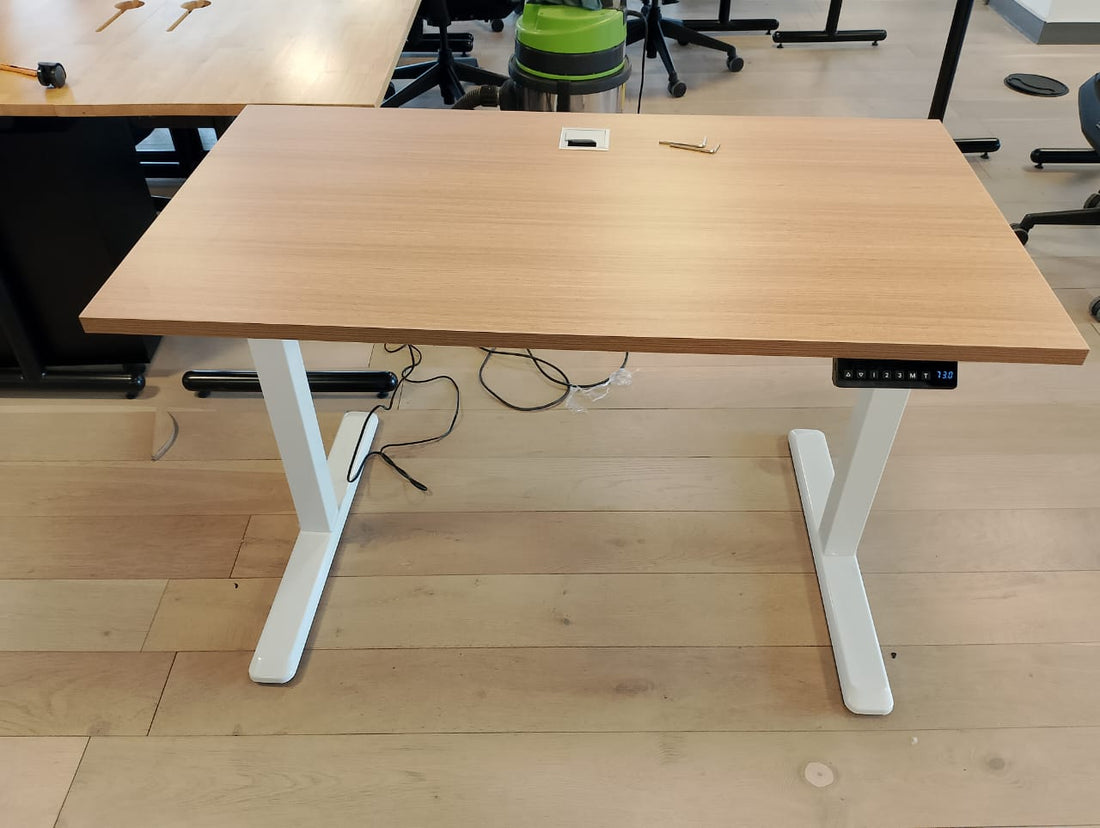
How an Adjustable Table for Office Spaces Can Boost Productivity
Share
In today's fast-paced work environment, enhancing productivity is paramount for both employers and employees. One innovative solution gaining traction in modern office design is the adjustable table for office spaces. These versatile furniture pieces allow users to modify their workspace according to their needs, offering a range of benefits that go beyond mere convenience. This blog delves into how an adjustable table can significantly enhance productivity, improve health, and contribute to a more dynamic work environment.
The Rise of Adjustable Tables in Modern Offices
As remote work and flexible office arrangements become more commonplace, the demand for ergonomic furniture has surged. Adjustable tables, also known as sit-stand desks, offer a unique blend of functionality and flexibility, allowing employees to switch between sitting and standing positions throughout the day. This adaptability not only caters to personal preferences but also aligns with ergonomic principles aimed at reducing strain and discomfort.
Key Features of Adjustable Tables
-
Height Flexibility: Most adjustable tables come with electronic or manual mechanisms that allow users to change the height easily. This feature accommodates different body types and preferences, promoting a more comfortable working posture.
-
Durability and Design: Many modern adjustable tables are designed with high-quality materials, ensuring durability while also adding aesthetic appeal to the office space.
-
Space Efficiency: Adjustable tables often have a compact design, making them suitable for various office layouts, from open-plan environments to smaller cubicles.
How Adjustable Tables Enhance Productivity
1. Improved Ergonomics and Comfort
Sitting for prolonged periods can lead to discomfort and chronic pain, affecting concentration and productivity. An adjustable table for office use allows employees to switch between sitting and standing, promoting better posture and reducing the risk of musculoskeletal disorders. By aligning the workspace with individual ergonomic needs, employees can work more comfortably, leading to increased focus and efficiency.
2. Enhanced Energy and Mood
Studies have shown that standing while working can increase energy levels and improve mood. The act of standing promotes better blood circulation, which can enhance cognitive function and creativity. By incorporating an adjustable table, employees are encouraged to be more active throughout the day, which can lead to a more positive workplace atmosphere.
3. Greater Collaboration and Interaction
Adjustable tables often facilitate a more dynamic office environment. When employees can easily switch their workstations, they are more likely to engage in spontaneous discussions or collaborate on projects. This flexibility fosters teamwork and encourages a culture of collaboration, which can lead to innovative solutions and improved overall performance.
4. Customization for Individual Needs
Every employee has unique working styles and preferences. An adjustable table for office use allows individuals to customize their workspace to suit their specific needs. Whether someone prefers to stand while working on a project or needs to sit for tasks requiring more concentration, having the option to adjust their desk can significantly impact their productivity levels.
Health Benefits Associated with Adjustable Tables
1. Reduced Risk of Health Issues
Prolonged sitting has been linked to various health issues, including obesity, cardiovascular disease, and diabetes. By integrating adjustable tables into office spaces, employees can mitigate these risks by alternating between sitting and standing throughout the day. This proactive approach to health can result in lower healthcare costs for employers and improved employee well-being.
2. Increased Focus and Decreased Fatigue
Standing desks can help combat the fatigue that often accompanies long hours of sitting. Employees who use adjustable tables report feeling more alert and focused, which translates into better performance. This heightened concentration can lead to more efficient work processes and improved output.
Tips for Implementing Adjustable Tables in the Office
To maximize the benefits of adjustable tables, consider the following tips:
-
Incorporate Training: Provide employees with training on how to use adjustable tables effectively. Educating them about proper ergonomics and the benefits of alternating between sitting and standing can enhance their experience.
-
Create a Flexible Workspace: Design your office layout to accommodate adjustable tables. Encourage employees to personalize their workspaces by arranging their desks according to their preferences.
-
Promote Regular Movement: Encourage employees to take breaks and move around. Incorporating walking meetings or short stretching sessions can complement the use of adjustable tables and further boost productivity.
Conclusion
The implementation of an adjustable table for office spaces is a forward-thinking approach to enhancing productivity and employee well-being. By promoting better ergonomics, encouraging movement, and fostering a collaborative environment, adjustable tables are more than just furniture; they are a vital component of a modern, healthy workspace. As businesses strive for higher productivity and improved employee satisfaction, investing in adjustable tables is a step in the right direction.
Incorporating adjustable tables not only benefits employees but also enhances the overall work culture, leading to a thriving and productive office environment. As you consider updates to your office layout, make adjustable tables a priority for a happier, healthier, and more productive workforce.
